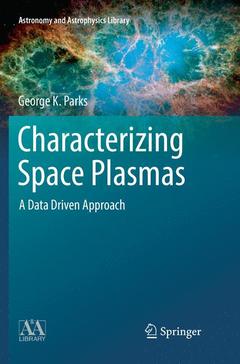Characterizing Space Plasmas, Softcover reprint of the original 1st ed. 2018 A Data Driven Approach Astronomy and Astrophysics Library Series
Auteur : Parks George K.

This didactic book uses a data-driven approach to connect measurements made by plasma instruments to the real world. This approach makes full use of the instruments? capability and examines the data at the most detailed level an experiment can provide. Students using this approach will learn what instruments can measure, and working with real-world data will pave their way to models consistent with these observations.
While conceived as a teaching tool, the book contains a considerable amount of new information. It emphasizes recent results, such as particle measurements made from the Cluster ion experiment, explores the consequences of new discoveries, and evaluates new trends or techniques in the field. At the same time, the author ensures that the physical concepts used to interpret the data are general and widely applicable. The topics included help readers understand basic problems fundamental to space plasma physics. Some are appearing for the first time in a space physics textbook. Others present different perspectives and interpretations of old problems and models that were previously considered incontestable. This book is essential reading for graduate students in space plasma physics, and a useful reference for the broader astrophysics community.
Maximizes reader insight into real-world observations and data through detailed discussions
Presents critiques of space plasma models using both theory and cutting-edge observational data
Provides step-by-step derivations of the equations presented, along with enlightening mathematical and historical asides
Challenges the reader with critical questions relevant to the presented material
Date de parution : 01-2019
Ouvrage de 332 p.
15.5x23.5 cm
Date de parution : 08-2018
Ouvrage de 332 p.
15.5x23.5 cm
Thèmes de Characterizing Space Plasmas :
Mots-clés :
space plasma modeling; data-based interpretation of space plasma physics; space plasma observations; critical evaluation of space plasma observations; kinetic interpretation of space plasmas; understanding plasma instruments; cluster ion experiment; collisionless shocks; solar wind; magnetosphere; kinetic plasma models; theoretical astrophysics; fluid- and aerodynamics



